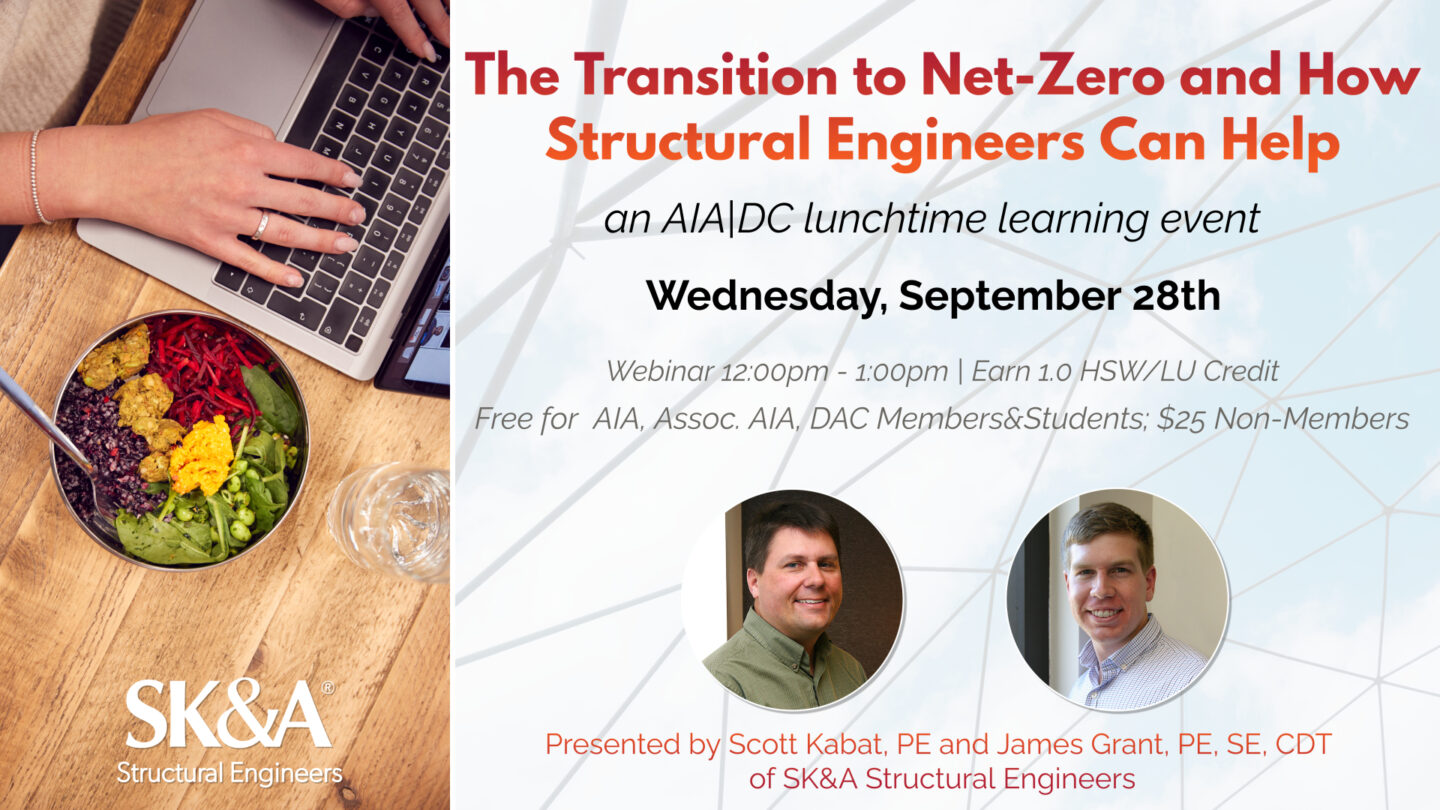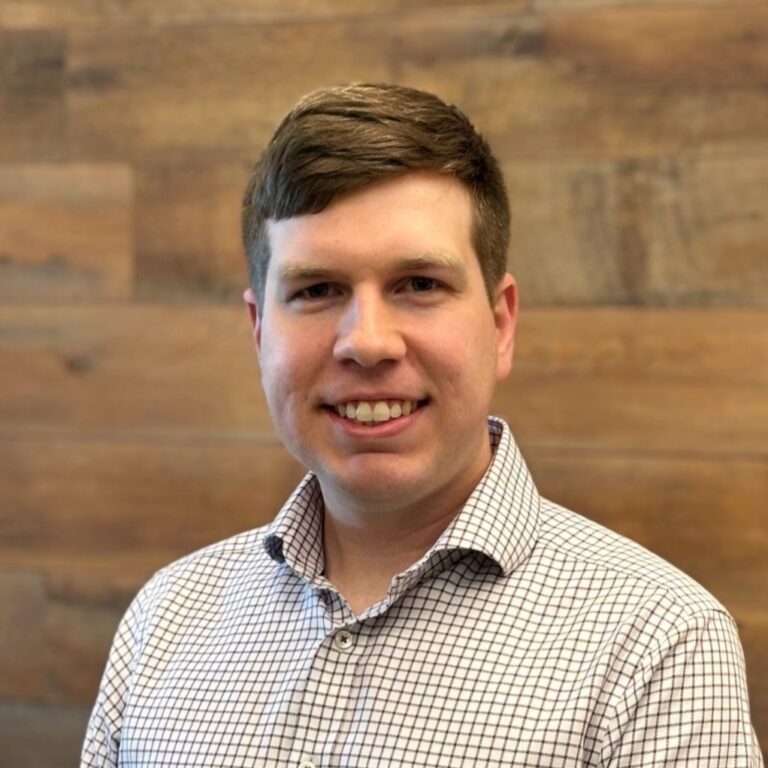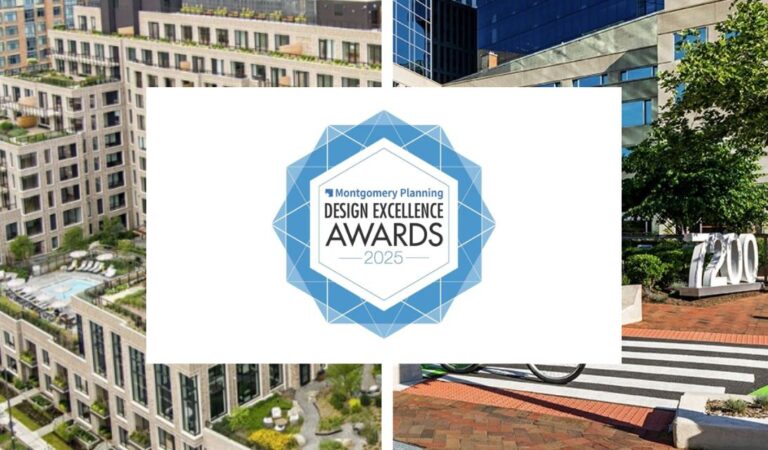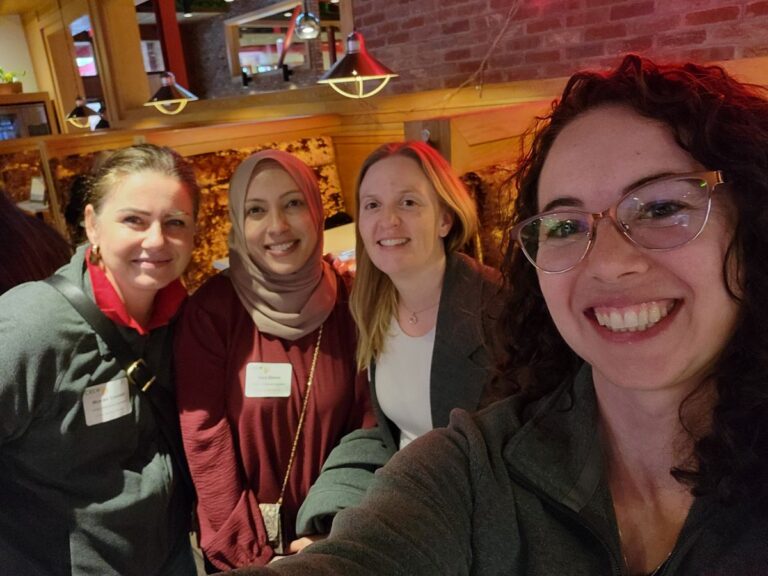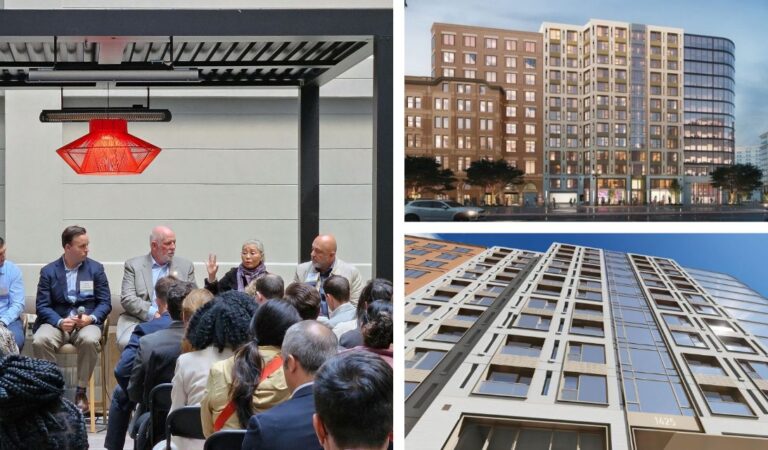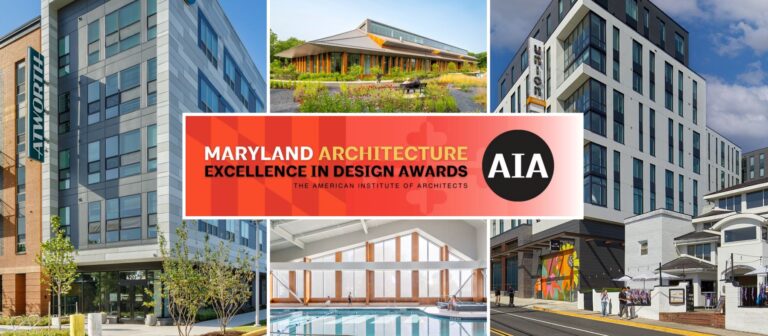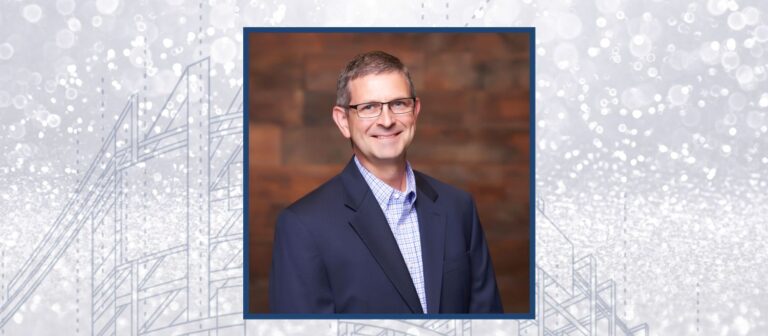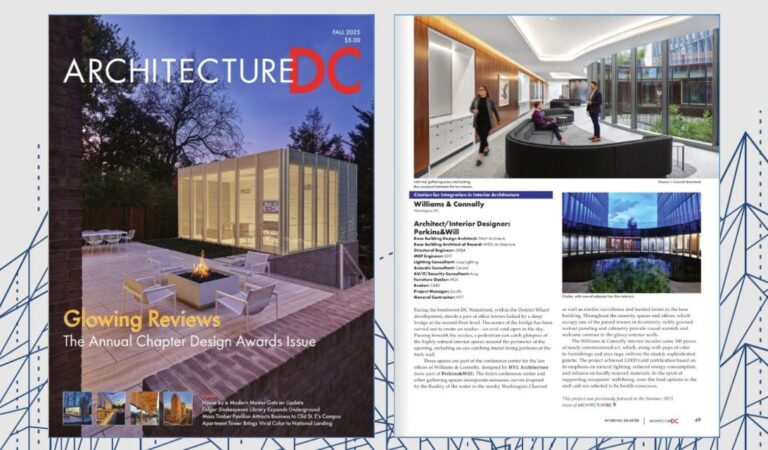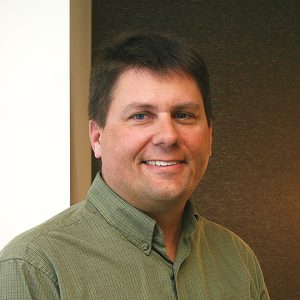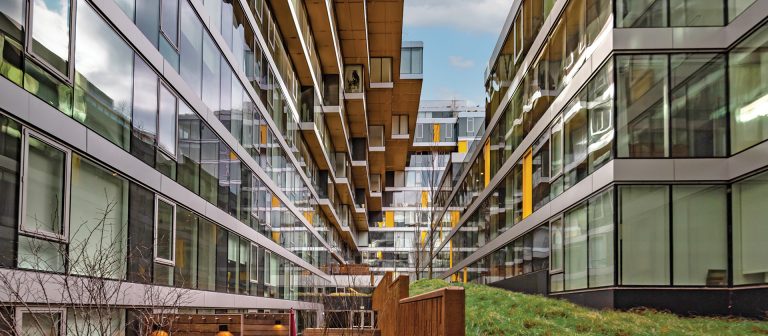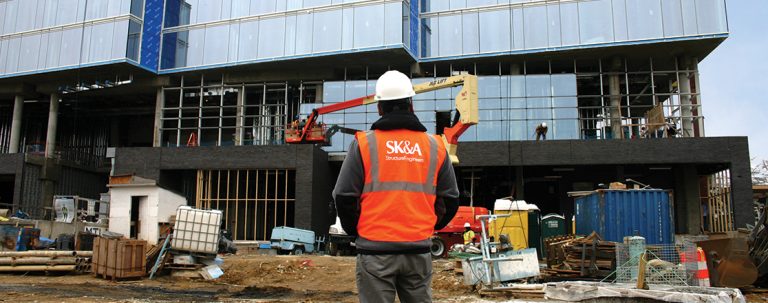On September 28th, Scott Kabat, PE and James Grant, PE, SE, CDT of SK&A Structural Engineers presented this lunchtime learning webinar for AIA DC.
As part of the design community, structural engineers hold responsibility in protecting the public’s health, safety, and welfare. This duty involves considering the effects of global warming and embodied carbon within the structures we design. Often overlooked, embodied carbon is an immense portion of a building’s total carbon output, with more than 50% of embodied carbon resulting from the structure, or “bones”, of our buildings. This session offers ideas the design team can implement to reduce the embodied carbon of a building and support the environmental goals for the project.
Learning Objectives:
- Understanding what embodied carbon is and why it is important
- Learn the ways in which embodied carbon can be reduced within the structure
- Discuss the barriers involved in reducing embodied carbon
- Communicate embodied carbon goals, requirements, and data with the design and construction teams
